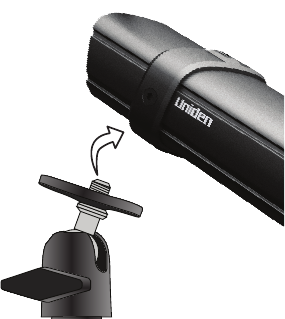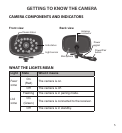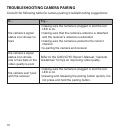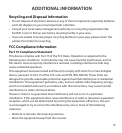
7
• Rainfall, pool water ripples/reflections, tree/shrub leaves blowing in the wind
- and the shadows they create - can generate motion detection false alarms.
You can mount the camera with the stand on the bottom (on a wall or table-
top) or on the top (on the ceiling). When you are positioning the camera, you
might want to bring the receiver along; it’s much easier to get the camera into
the right position when you have the display handy.
1. Hold the base of the camera stand where you want to mount it and mark
the location of the screw holes.
2. Use the included screws and anchors to attach the base to the wall or
ceiling.
ATTACH THE CAMERA
Before attaching the camera, tug gently on the stand to make sure it is securely
in place.
1. For each camera, attach the camera bracket to the mounting screw. You
can attach the stand to the top or the bottom of the camera as needed.
Tighten it a few turns, then turn the camera
to face the direction you want.
2. Tighten the camera brace up against the
camera to secure it into place.
3. Unlock the mounting post by turning the
wingnut to the left a few turns.
4. Set the mounting post to the correct angle,
then tighten the wingnut until the post is
locked into place.
5. Attach the antenna to the rear of the camera.


















